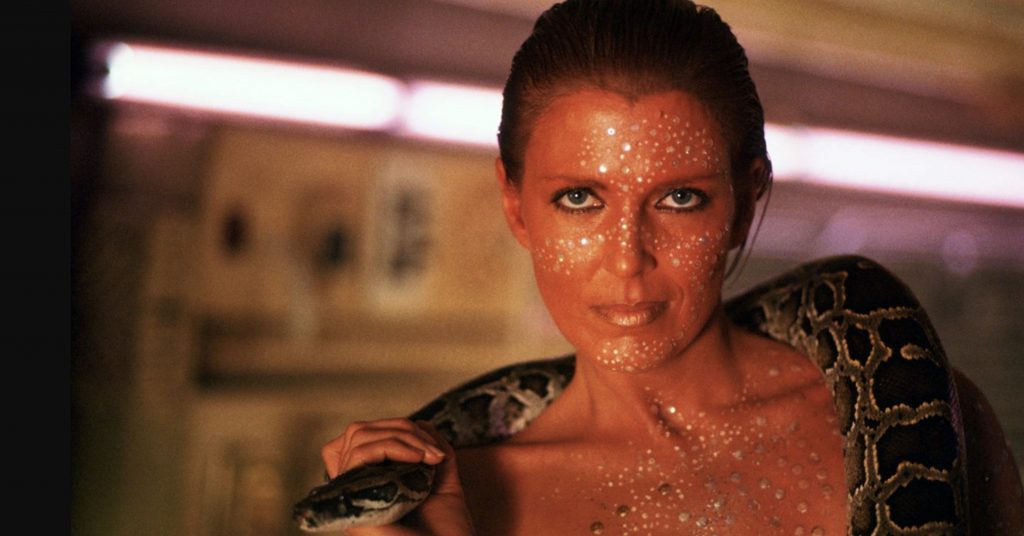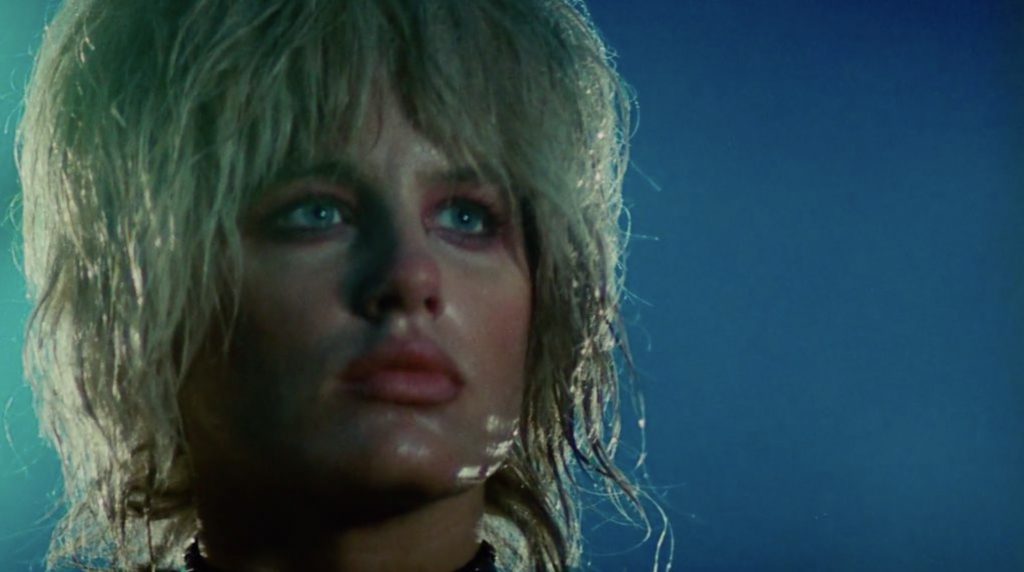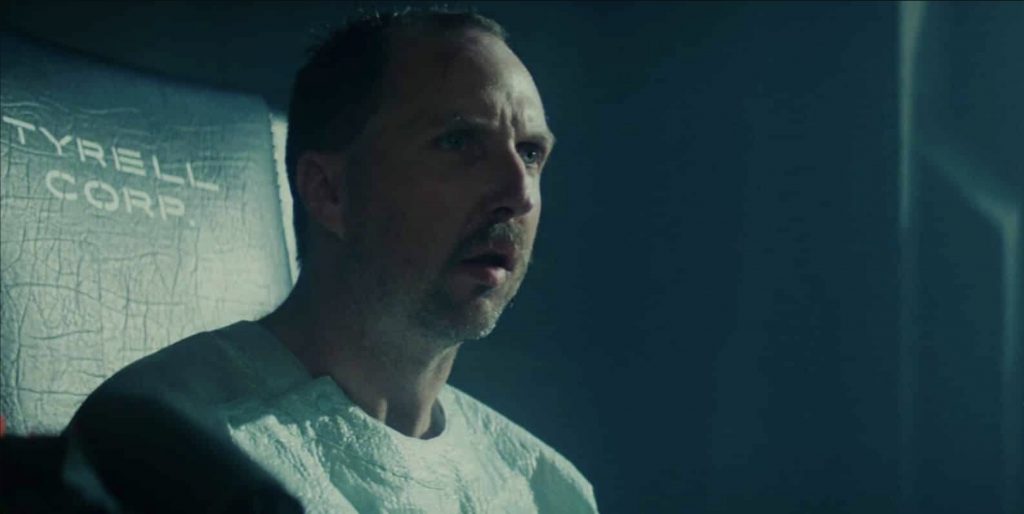It’s really quite astonishing to think that the concepts presented in Blade Runner have been a part of the popular psyche for so long. More and more we are seeing aspects of science fiction from the past become a part of our present reality. The difficulty is identifying which of these about which we should be excited, and which are more than a little bit disturbing. One thing that is unquestionable however, is the incredible vision that so many great sci-fi authors have demonstrated through the years. Given the accuracy of some of their predictions, should we be looking to the writers of today to give us an insight into the future we can expect? If so, it might be time to stock up on bottled water and cryptocurrencies, just in case.
Original story by Richard Edwards follows:
Core Data:
- Vision: Genetically engineered Replicants almost indistinguishable from humans
- Type: Popular culture – film
- As Seen In: Blade Runner, Blade Runner 2049
- Envisioned: 1982, 2017
- Visionary: Philip K Dick (author of Do Androids Dream Of Electric Sheep?), Ridley Scott (director), Denis Villeneuve (director)
- Target Dates: 2019 (as envisioned in 1982), 2049
Overview:
Its future may now be the past, but Blade Runner’s vision of 2019 Los Angeles remains one of cinema’s greatest visions of a dystopian cityscape. And this week that vision is an incredible 40 years old.
Already guaranteed a place in the sci-fi hall of fame thanks to Alien, director Ridley Scott crafted a second classic just three years later, mixing together genetically engineered androids, a cynical cop, and lots of rain to expand the boundaries of the genre.
While audiences took a while to comprehend its brilliance – even star Harrison Ford complained that “I was a detective who did very little detecting” – this adaptation of Philip K Dick novel Do Androids Dream Of Electric Sheep? used the plight of a group of fugitive “Replicants” to explore the human condition, making them every bit as sympathetic as their creators.
With belated sequel Blade Runner 2049, director Denis Villeneuve (who’s since helmed Dune) subsequently achieved the near-impossible, creating a follow-up that expands the mythology of the original, while maintaining its famously ambiguous tone.
The universe Scott created remains a sci-fi world unlike any other, so here we dive into the technology that makes the future – or should that be the past? – tick…

Key Tenets:
- Hardware: Replicants are genetically engineered humanoids manufactured by the Tyrell Corporation. They are virtually indistinguishable from adult human beings.
- Although they’re flesh-and-blood, the movie’s introduction explains that they are “superior in strength and agility, and at least equal in intelligence, to the genetic engineers who created them”.
- Roy Batty, Pris, Zhora, Leon and the other Nexus-6 models active in (the movie’s version of) 2019 are ‘born’ with limited emotional responses, but these develop as a Replicant gets older. In order to prevent them evolving the empathic abilities that would make them truly indistinguishable from humans, the Nexus-6 are designed to expire four years after their incept date – an in-built “time to die”.
- Not all Replicants of this era have an in-built expiry date, however. Released in 2020, the Nexus-8 models – used exclusively off-world – have open-ended lifespans and some (such as Sapper Morton) are still alive in 2049. Echoing the Synths in Humans, the Nexus-8s have ocular implants to help distinguish them from humans.
- Rachael is a (seemingly) unique prototype Nexus-7, built to feel more emotions than her Nexus-6 counterparts. It’s later revealed that she is able to give birth, and she has a child with Rick Deckard who may (or may not) be a Replicant himself. Sadly, Rachael dies during childbirth.
- The Nexus-8 remains the peak of Replicant evolution for several decades. When a group of rogue Replicants detonate a nuclear weapon in orbit in 2022, the resulting electromagnetic pulse wipes out electronic records across the US. Production of Replicants is subsequently banned.
- After industrialist/entrepreneur Niander Wallace wins the rights to build Replicants in the 2030s, he launches the Nexus-9 line. This new model is programmed to put a human’s life ahead of its own, and will readily kill itself to prevent a human from coming to harm. This is effectively a riff on Isaac Asimov’s famous ‘Three Laws of Robotics’.
- The Wallace Corporation also manufactures Digital Companions (or DiJi) such as the popular Joi. These holographic AI may be customised by the user, and can be projected using a unit installed in the home, or via a portable emitter.

- Experience: Replicants are primarily used for slave labour in off-world colonies, and for the exploration and colonisation of other planets – jobs considered too dangerous for humans. “Pleasure models” are also available.
- By 2019, Replicants have been made illegal on Earth following a mutiny by a Nexus-6 combat team on an off-world colony.
- Specialist police squads, known as Blade Runners, are dispatched to hunt them down. The penalty for being found on Earth is death – though the authorities refer to this as “retirement”.
- Blade Runners use the Voight-Kampff test to identify Replicants. The test uses a set of stock questions designed to create an emotional response, and monitors the subject’s reactions.
- While most Replicants can be identified within 20 questions, Blade Runner Rick Deckard needs more than 100 to work out that prototype Nexus-7 model Rachael isn’t a real human.
- Replicants often develop a need to form attachments, and are known to collect photographs of associates/friends.
- Rachael is given false memories (those of her creator, Eldon Tyrell’s, niece) to help maintain the illusion that she’s human.
- The Wallace Corporation’s Nexus-9 models – such as Agent K – are fully aware they’re Replicants.
- They’re employed in similar roles to the Nexus-6 models, but can also work as Blade Runners, hunting down other Replicants.
- Like Rachael, they have false memories, but these are artificial constructs rather than recollections ‘borrowed’ from a human.
- The Nexus-9s regularly perform a Baseline test to confirm they’re operating within the correct parameters.
- Company: In 2019, the Nexus line of Replicants are manufactured exclusively by the Tyrell Corporation. The company, founded by groundbreaking scientist Dr Eldon Tyrell, has the misleading motto, “more human than human”.
- The Tyrell Corporation also manufactures owls.
- Construction of specific body parts is farmed out to freelance genetic designers – JF Sebastian, for example specialises in nervous systems while Hannibal Chew is a master craftsman when it comes to eyes. As rogue Replicant Roy Batty puts it, “If only you could see what I have seen with your eyes…”
- By 2049, the monopoly on Replicant manufacture has passed to the Wallace Corporation, run by Niander Wallace.
- Economics: With its headquarters spread across two enormous pyramids on the outskirts of Los Angeles, the Tyrell Corporation is one of the biggest multinationals on the planet.
- As well as preventing Replicants from developing emotional responses, the in-built expiry date on the Nexus-6 models is also an excellent business strategy for Tyrell, seeing as consumers will need to upgrade every four years.
- Replicants are big business, but following the 2022 blackout and subsequent ban on their manufacture – not to mention Tyrell’s death at the hands of Roy Batty in 2019 – the company falls into bankruptcy.
- Having made his fortune solving a global food crisis with genetically modified crops, Wallace purchases the rights to Tyrell’s business, and successfully lobbies for a relaxation of laws restricting Replicants. His new range of Nexus-9 models makes him an even richer man.
- IP: There’s seemingly as much variety among Replicants as there is in the human population.

State of Play (2022)
- Hardware: Creating an artificial organism with the complexity and intelligence of a human being is currently nothing more than a fantasy.
- Numerous mammals (from dogs and cats to horses and monkeys) have been cloned from the DNA of existing creatures.
- Japanese scientists have also taken cells from the tails of mice and reprogrammed them as stem cells. The resulting eggs were fertilised and implanted in mothers who gave birth to healthy mouse babies.
- Both of these procedures require a surrogate mother, however, so are rather different to the more industrialised processes used for Replicant manufacture in the Blade Runner movies.
- One of the closest current approximations of Blade Runner’s living machines may be Xenobots. These “reconfigurable biomachines” are entirely organic (they’re based on frog cells) but can be programmed to take on different forms and perform a variety of tasks. Being just a millimetre across, however, they’re not likely to pass for human any time soon.
- And while you shouldn’t get your hopes up for cute robot babies, machine reproduction is also possible – on a microscopic level, at least. The scientists behind the Xenobots have since discovered that their inventions have the capacity to self-replicate by building copies of themselves.
- Many of us interact with AI companions every day, but the likes of Siri, Alexa and Cortana lack the sophistication and empathy of Blade Runner 2049’s Joi. A genuine personality in a computer remains elusive.
- Even if we’re not quite at the point of having photorealistic companions in our homes, holographic technology is rapidly evolving. For example, MDH Hologram successfully created the illusion of the late Tupac Shakur appearing on stage – the effect is created by projecting a 3D CG image onto a pane of glass.
- One of the few things in the Blade Runner movies that is currently conceivable is the idea of a nuclear explosion creating an electromagnetic pulse (EMP) – the electromagnetic fields generated by a blast can indeed damage computer systems.
- Experience: The Blade Runner movies are classics of the science fiction genre, but if you think about the technology too much, it makes very little sense. The movies also raise some awkward ethical questions.
- If you’re simply using your Replicants off-world to fight or work dangerous jobs, it seems a colossal waste of money to make them so lifelike.
- Also, it seems to be asking for trouble to make them so intelligent, and capable of developing emotions/feelings. Why create machines with the capacity to turn against their creators? The Terminator movies clearly don’t exist in this version of 2019…
- Perhaps most troubling, however, is the moral questions that arise from building a race of artificial lifeforms that are – to all intents and purposes – human, purely to work as slave labour. To force a sentient being to work in this way, denying them the rights granted to humans, is very, very wrong.
- And you have to assume that the existence of all those Replicants has sent human unemployment levels through the roof.
- While it’s not quite as cinematic as Blade Runner’s famous Voight-Kampff test, the real-life Turing Test (named after computing pioneer Alan Turing) was designed to identify intelligence in machines.
- Economics: Rather than making every single Replicant different, surely it would be more economically viable to create vast production lines of identical models. You’d also eliminate the problem of Replicants being indistinguishable from humans.
Reality check: not feasible right now but would we want it to be?
Creating an entire race of genetically engineered people is quite the technological feat, but making them stronger than us – and prone to rebellion – is a recipe for disaster. To paraphrase Dr Ian Malcolm in Jurassic Park, if scientists get so preoccupied thinking about whether they could, this is one case where they should stop to think about whether they should.
Further reference:
- Blade Runner – film
- Blade Runner 2049
- Do Androids Dream Of Electric Sheep? – source novel
- Blade Runner: Black Out 2022 – anime short set in 2022
- Blade Runner: Black Lotus – anime TV series set in 2032
- 2036: Nexus Dawn – anime short set in 2036
- Genetic engineering
- Cloning
- Xenobots
- Self-replicating machines
- Electromagnetic pulse (EMP)



































